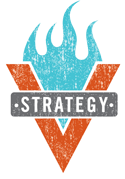Sponsorship Marketing from the Company Perspective
This was published on Rodeo Sponsorship Strategies (rodeosponsorshipstrategies.com) blog in January, 2014.
When you are out looking for sponsorship for you or your event, here are a few things to keep in mind, from the company or marketing director’s side of the table.
- Think about it as “partnership marketing” which will get you in the right frame of mind. You help us, we help you.
- We don’t need you. We have hundreds of options for spending our limited marketing budget. If we sponsor you, how will we sell more product? I am not going to connect the dots, you need to show me how it will help us, because I have to justify my budget spending to my boss and show him next year that I made a smart decision. We don’t sponsor to be nice, we need to sell stuff. Think like a business person.
- Do your research. Know my company, what we already sponsor, and what my products are. If you are a bullrider or announcer, don’t ask me to sponsor you with a horse trailer company because you aren’t hauling horses to events, and not showing off my product.
- Impress me. This means professional looking KIT, not an email or Facebook message with grammar errors. In this kit (digital or paper) you should include: your bio/background, what you’ve won, photos (we want our product to look good on you/your horse/at your event), where you plan on competing next year, who your other sponsors are (we want to be in good company and not with a competitor). If you are an event, we want to know your demographics, which means how many people attend, from where, how old they are, how many men vs. women, how much money they have, and photos of your venue. I won’t spend the time looking or asking for this information, because the other people who want my money have done it for me.
- Product only sponsorships still cost us money. Yes, we will want you to use our products and get them out in the public eye, but product isn’t “free.” If all your photos show you using the competitor’s product, why not get them to sponsor you? Don’t say that you love my product when the photos show that you don’t even use it. On a big item like a trailer, find someone who has one of our trailers and tell me specifically what you like about it.
- Look and act professional. We don’t want our endorsees representing us by acting immature or partying or having questionable PR on their Facebook pages. You represent your sponsors, take that seriously in everything that you do, 24 hours a day.
- Be loyal. Don’t jump sponsors every year or go with whoever offers the next better deal. If I see your history of a logo jumper, I won’t be interested. We invest in you; you need to help us build a brand together. Come to me with ideas on how we can work together, or opportunities you see when you’re out on the road or doing projects with your other sponsors. Be proactive in PARTNERING with us. Once you’re signed, NEVER be caught using a competitor product, because that will be the one photo that gets back to me.
- When you’re signed/sponsored, make my life easy. Volunteer to be part of photo shoots and autograph signings. Take initiative and don’t make me call you 12 times. The endorsees that are easy are the ones I will promote in articles, photos, catalogs, websites and they are the ones that won’t get dumped in budget cuts. Be my star and I will fight to keep you.
Robyn Volkening, M.A., owns V Strategy, LLC, a marketing and business development consulting firm. She has managed sponsorships for the some of the largest apparel, boot, and horse trailer companies in the industry and is a published author. www.vstrategyonline.com
